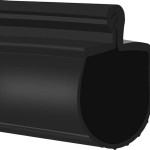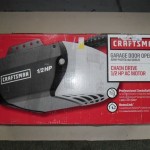What to Lubricate Your Garage Door With
Maintaining a garage door in optimal working condition requires regular lubrication. This process reduces friction, minimizes wear and tear, and extends the lifespan of the door and its components. Choosing the appropriate lubricant for different parts of the garage door is crucial for ensuring smooth and reliable operation.
Identifying the Key Areas for Lubrication
Before applying any lubricant, it's essential to identify the components of the garage door that require attention. Neglecting these areas can lead to increased noise, difficulty in opening and closing, and potential damage. The primary areas to lubricate include the rollers, hinges, springs, tracks, and opener chain or screw.
Rollers: Garage door rollers move within the tracks, facilitating the smooth up-and-down movement of the door. Friction between the rollers and the tracks is a common cause of noise and operational difficulties. Regular lubrication minimizes this friction, ensuring quiet and efficient operation. Rollers made of nylon or plastic typically require less frequent lubrication than steel rollers, but all types benefit from periodic maintenance.
Hinges: Hinges connect the different sections of the garage door, allowing it to bend and fold as it moves along the tracks. Hinges are subject to considerable stress and movement, making them susceptible to wear and tear. Lubricating the hinges reduces friction between the moving parts, preventing squeaking and binding. There are different types of hinges to consider, and application methods will vary based on these types.
Springs: Garage door springs, whether torsion or extension springs, are responsible for counterbalancing the weight of the door, making it easier to open and close. These springs are under immense tension and are crucial for the door's proper function. While professional maintenance is recommended for springs, lubricating them can help reduce friction and prevent corrosion. It is crucial to exercise extreme caution when working near garage door springs, as they can cause serious injury if mishandled.
Tracks: The tracks guide the rollers and ensure that the garage door moves smoothly and vertically. Debris and friction within the tracks can impede the door's movement, leading to operational problems. Cleaning and lubricating the tracks helps to minimize friction and allows the rollers to move freely. Regular cleaning of the tracks often precedes lubrication to ensure the lubricant adheres properly and doesn't simply bind with existing dirt and grime.
Opener Chain/Screw: Garage door openers utilize either a chain or screw drive mechanism to raise and lower the door automatically. These mechanisms require lubrication to prevent wear and ensure smooth operation. The specific type of lubricant required depends on the type of opener. For chain drives, a white lithium grease is typically recommended, while screw drives may require a specialized lubricant approved by the manufacturer. Consulting the owner's manual is vital for determining the appropriate lubricant for the opener.
Selecting the Appropriate Lubricant Types
Choosing the correct lubricant for each component of the garage door is essential for optimal performance and longevity. Different types of lubricants have varying properties and are suitable for different applications. Using the wrong lubricant can not only be ineffective but may also damage the components.
Silicone-Based Lubricants: Silicone-based lubricants are a popular choice for garage doors due to their versatility and effectiveness on various materials, including metal, plastic, and rubber. These lubricants are resistant to water and temperature variations, making them suitable for both indoor and outdoor use. Silicone lubricants do not attract dust and dirt as readily as some other types, helping to keep the components clean and functioning smoothly. They are commonly used on rollers, hinges, and tracks.
Lithium Grease: Lithium grease is a thicker, more viscous lubricant that is ideal for components that experience high stress and friction, such as the opener chain or screw drive. White lithium grease is a common option and provides long-lasting protection against wear and corrosion. Its adhesive properties ensure that it stays in place, providing continuous lubrication even under heavy use. Lithium grease is particularly well-suited for metal-on-metal contact points.
Penetrating Oil: Penetrating oil is a lightweight lubricant that can penetrate tight spaces and loosen rusted or seized components. While it's not a primary lubricant for regular maintenance, it can be useful for freeing up stuck rollers or hinges before applying a more durable lubricant. It can also assist in cleaning corroded parts. It is crucial to use penetrating oil sparingly and wipe away any excess to prevent it from attracting dirt and debris.
Dry Lubricants: Dry lubricants, such as graphite or Teflon-based sprays, leave behind a dry film that reduces friction without attracting dust and dirt. These lubricants are particularly useful in dusty or dirty environments where other lubricants might quickly become contaminated. Dry lubricants are suitable for tracks and rollers, as they provide a smooth, friction-reducing surface without the mess of wet lubricants. They are designed to prevent accumulation of material that could impede moving parts.
Avoiding Inappropriate Lubricants: It is important to avoid using certain types of lubricants that can be harmful to garage door components. WD-40, for example, is a solvent and degreaser rather than a lubricant. While it can be useful for cleaning and removing rust, it does not provide long-lasting lubrication and can actually dry out components over time. Similarly, motor oil is not recommended for garage door lubrication, as it can attract dirt and grime, leading to premature wear and tear. Always choose lubricants specifically designed for garage door applications.
Applying Lubricant Effectively
Proper application of lubricant is just as important as selecting the correct type. Applying too much or too little lubricant can be ineffective and may even cause problems. Follow these steps for effective lubrication:
Preparation: Before applying any lubricant, clean the components thoroughly to remove dirt, dust, and old grease. Use a brush or cloth to wipe down the rollers, hinges, tracks, and opener mechanism. For areas with significant buildup, a degreaser may be necessary. Ensure that the surfaces are dry before applying the lubricant. Also, disconnect the garage door opener from its power source before attempting any maintenance or lubrication.
Application Technique: Apply lubricant sparingly and directly to the moving parts of each component. For rollers, apply the lubricant to the bearings and the point where the roller meets the track. For hinges, apply the lubricant to the pivot points where the hinge sections connect. For springs, apply a light coating of lubricant along the length of the spring, being careful not to over-saturate it. For the opener chain or screw, follow the manufacturer's instructions for applying the lubricant. Use the extension tube that often comes with spray lubricants to reach tight spots.
Even Distribution: After applying the lubricant, operate the garage door several times to distribute the lubricant evenly throughout the components. This ensures that all moving parts are properly lubricated and that any excess lubricant is wiped away. Observe the movement of the door and listen for any unusual noises, indicating areas that may require additional lubrication. It is beneficial to inspect the components after a few cycles to confirm that the lubricant is evenly distributed and has not been displaced.
Safety Precautions: Always wear safety glasses and gloves when working with lubricants to protect your eyes and skin. Work in a well-ventilated area to avoid inhaling fumes from spray lubricants. Be extremely cautious when working near garage door springs, as they are under high tension and can cause serious injury if mishandled. If you are not comfortable working with garage door springs, it is best to hire a professional. Dispose of used lubricants and cleaning materials properly, following local regulations. Store lubricants in a safe place, out of reach of children and pets.
Regular Inspection: Perform regular inspections of the garage door components to identify any signs of wear, damage, or corrosion. Address these issues promptly to prevent them from escalating into more significant problems. Lubrication should be part of a routine maintenance schedule, typically every 3-6 months, depending on the frequency of use and environmental conditions. Maintaining a log of lubrication dates and the types of lubricants used can help ensure consistent and effective maintenance.
By understanding what to lubricate a garage door with and following these guidelines, homeowners can ensure that their garage doors operate smoothly, quietly, and reliably for years to come. This proactive approach not only extends the lifespan of the garage door but also enhances the safety and convenience of the home.

How To Lubricate A Garage Door Wholesalegaragedoors Com Au
How To Lubricate Your Garage Door Sterling Llc Macomb Mi

How To Lubricate A Garage Door 10 Steps With S Wikihow

Silent Garage Door Lubricant State 48 Doors

3 In One 11 Oz Garage Door Lube With Smart Straw Spray 100584 The Home

3 In One 11 Oz Garage Door Lube With Smart Straw Spray 100584 The Home

3 In One 11 Oz Garage Door Lube With Smart Straw Spray 100584 The Home

How To Lubricate A Squeaky Garage Door Raynor Doors

How To Lubricate A Garage Door Properly

How To Properly Lubricate Your Squeaky Garage Door








